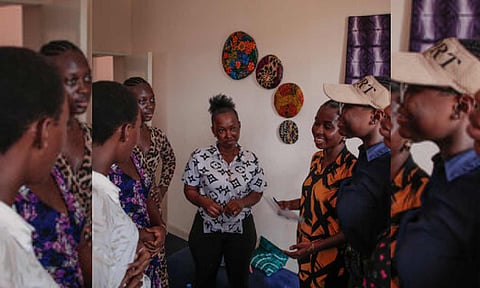

NEW YORK: Secrets swirl through homes and villages around the world, and in a poor district of Makeni, Sierra Leone, they involve what families do to the genitals of their daughters.
More than 2 million girls around the world endure genital mutilation before their fifth birthday each year, and most women here in the West African nation of Sierra Leone have been cut. We often think of human rights abuses as wartime atrocities or what governments do to dissidents, but sometimes they involve what family members do to the people they love.
In a low-slung home in the city of Makeni, a mom explained why she wants her daughters to be cut: It is her culture. It keeps girls chaste. It marks their sacred transition into womanhood and welcomes them into a community.
But her daughter, Alimatu Sesay, 18, was having none of that. “I’m not ready to go” get cut, she said firmly. “It is my right.”
Sesay’s mother, Mariama Sillah, laughed and rolled her eyes. She herself was cut as a young girl, and generations of the female lineage have belonged to the secret Bondo society that conducts the cutting. She doesn’t want her daughter left behind.
But Sesay has seen the damage. She’s heard horror stories from friends. And she doesn’t see it as a rite of passage but as a brutal relic of the past.
Yet Sesay knows that her mother wants what is best for her, and she doesn’t resent her for it. “She is my everything, my light,” she said, embracing her mom with both arms.
And Sillah said she would not force her daughter, even if she thinks she is making a mistake. The argument grew more impassioned when it moved to Sesay’s younger sister, newly 9 years old: The mother said she wanted the girl cut, while Sesay said she’d do anything to protect her.
To an American like me, appalled by the practice and allowed to listen in, the conversation reflected something hopeful — not only Sesay’s resistance but also the way that more girls are pushing past the taboo of talking about female genital mutilation, or FGM. I wasn’t sure I’d be able to report on the practice, because traditionally it has been unmentionable, but it seems to be losing its silencing power. In a journey across Sierra Leone and Liberia, I found some young women were reluctant to discuss the topic, but many others were willing to candidly discuss it.
Here in West Africa, FGM usually entails cutting the clitoris and the labia minora. Some other African countries practice a more extreme version, infibulation — removing the clitoris and labia, and then sewing the vaginal opening shut to ensure virginity before marriage. More than 230 million girls and women alive today have undergone FGM, according to the World Health Organisation.
The practice, also sometimes called female genital cutting or female circumcision, is often meant to reduce female sexual pleasure and thus disincentivise sex outside marriage. But in West Africa, it can also mark a girl’s transition into womanhood and welcome her into one of the culturally revered Bondo and Zoes female societies.
As it has become more possible to discuss FGM, it has also become possible for health officials to discuss the consequences. Cutting is often done with an unsterilized razor blade, without anaesthetic, and the risks include infection, haemorrhaging, pain during intercourse and diminished sexual desire. Fatmata Kondowa, a midwife in Makeni who underwent FGM as a child, said that infections are common but often go untreated because of the insular nature of the societies. Girls sometimes die, she said, and then are buried quietly and secretly.
FGM is so horrific and widespread that it should be much higher on the global human rights agenda. To their credit, organisations like the United Nations Population Fund, UNICEF and UN Women have long spoken out against the practice, as have many aid groups.
Sierra Leone’s Parliament has weighed a ban on FGM. The Caucus on Female Genital Mutilation has urged societies to continue without FGM. International bodies continue to urge lawmakers to criminalise the practice, framing it not as a cultural rite but as a human rights emergency.
When someone like Sesay opens a biology textbook, she learns about infection, scar tissue and trauma. But she also absorbs a far more dangerous idea in the eyes of the cutters: that she has a right to say no. And that is the quiet revolution already underway — in classrooms, in whispers among friends, in small communities like Sesay’s, where a daughter brings to the table the talk of girls’ rights.